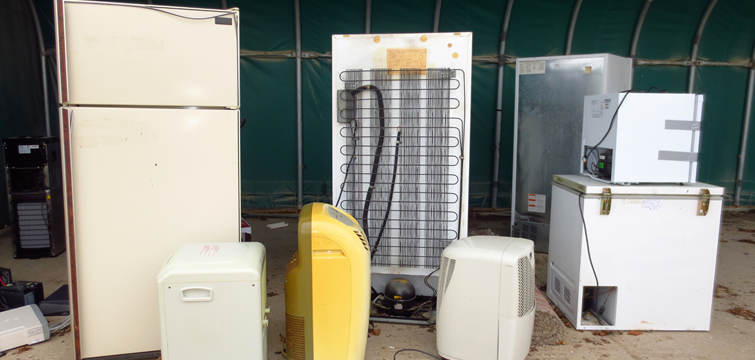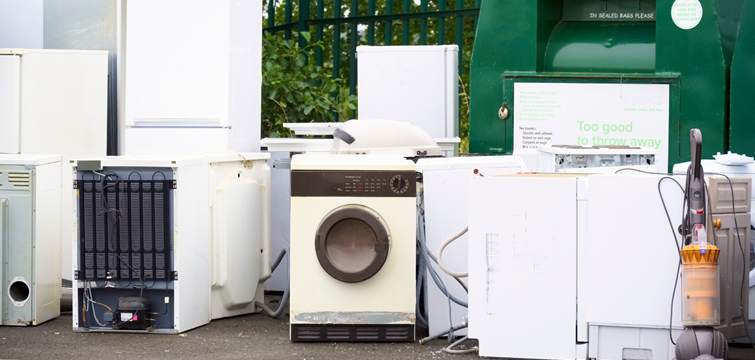The official guidance outlines how UK organisations should identify if they are impacted by Extended Producer Responsibility (EPR) for packaging and how they should start preparing now.
The recent update to the packaging EPR guidance provides more detail to the multitude of changes EPR will bring to packaging compliance, including identifying liable producers, specific reporting requirements and the role of compliance schemes.
Below we highlight the key updates producers should be aware of and where further clarification from government is still required.
Liable producers
We know that the move to a ‘single point of compliance’ for a given piece of packaging will be a major shift in the packaging regulations, and identifying the right producer is complex – especially as every piece of packaging on the UK market needs to be accounted for.
The updated guidance explains in new detail the seven business activities that form part of the main EPR threshold. These activities help determine if an organisation is obligated and will potentially pay waste management fees and recycling evidence costs. For instance, placing own-branded packaging on the market - identified by a “logo, a trademark, [or] any distinctive mark” – will result in an organisation picking up the obligation, even if they use a third-party to put their packaging on the market.
The guidance also explains the other packaging activities liable under EPR, such as owning an online marketplace and importing products in packaging. What it doesn’t resolve yet, however, are the more difficult scenarios arising from complex supply chains. For instance, if an importer puts another UK organisation’s ‘own-brand’ packaging on the market – who takes the obligation? This should be made much clearer in upcoming updates from government.
Reporting packaging data
Organisations classed as small under packaging EPR will have to report data annually whilst organisations classed as large will have to report packaging data at least twice a year. This will inform how much the scheme administrator will charge for local authority packaging management costs, and how much evidence of recycling they must buy.
The first two reporting deadlines under EPR for large organisations – October 2023, and April 2024 – will not need to inform a full recyclability-based fee modulation starting in 2025, so the data does not need to be as granular.
Nevertheless, the packaging information producers need to start gathering from the beginning of 2023 is still more detailed than it is presently, and the updated guidelines specify exactly what this involves. As an example, businesses will need to report packaging by material type and whether it is household packaging waste, street bin or non-household packaging waste to determine costs.
Again, there are several questions around the new reporting system that need answering. Do producers report all packaging “handled and supplied” throughout their business as it is currently stated, or just the packaging they know they are liable for under the packaging activities listed in the main EPR threshold - for instance, as a brand-owner or importer? If the former were true, the risk of double-counted packaging will be high. Again, this detail should be clarified by government soon.
Nation data reporting
Submitting nation data will be another yearly reporting deadline for most producers, and falls on the 1 December 2024 in the first instance.
It’s been established for some time that the amount of packaging arising in each nation will need to be quantified to inform devolved recycling targets, and the guidance now stipulates five activities that oblige a company to report. These include selling filled or empty packaging directly to consumers, importing packaging and subsequently discarding it, and hiring out reusable packaging.
Many will not know the destination of their packaging, especially those selling through distributors and wholesalers, so gathering this information may require significant further planning by producers.
The role of compliance schemes
The updated guidance reinforces that compliance schemes can help producers navigate the new requirements, by registering and paying registration fees, buying PRNs, and submitting detailed packaging data on their behalf.
One element that compliance schemes will not have any involvement in is the payment of waste management fees for packaging that is likely to end up as household waste or in street bins, as this will be invoiced directly to the producer organisation by the new scheme administrator.
Positive progress but more clarification required
Innovation and policy director Robbie Staniforth commented “We welcome the additional level of detail from the Government. While further clarifications are clearly required, this update marks positive progress in improving producer responsibility and waste management systems in the UK.”
“Clearly, the Government has recognised the vital role that Compliance Schemes, like Ecosurety, play in helping companies to understand and comply with necessarily complex legislation. We look forward to helping producers not just compile and submit data, but also to gain insight from it to improve their environmental performance.”
To find out more about packaging EPR and how you can prepare, please click here.

You may also be interested in...

Q3 2023 WEEE data shows promising collection figures
By Sophie Clelland 11 Dec 2023
Ecosurety divests from WEEE and Batteries compliance
By Louise Shellard 06 Nov 2023
UK on track to meet annual WEEE collection targets
By Sophie Clelland 05 Sep 2023
Promising WEEE collection figures released for Q1 2023
By Sophie Clelland 13 Jun 2023
